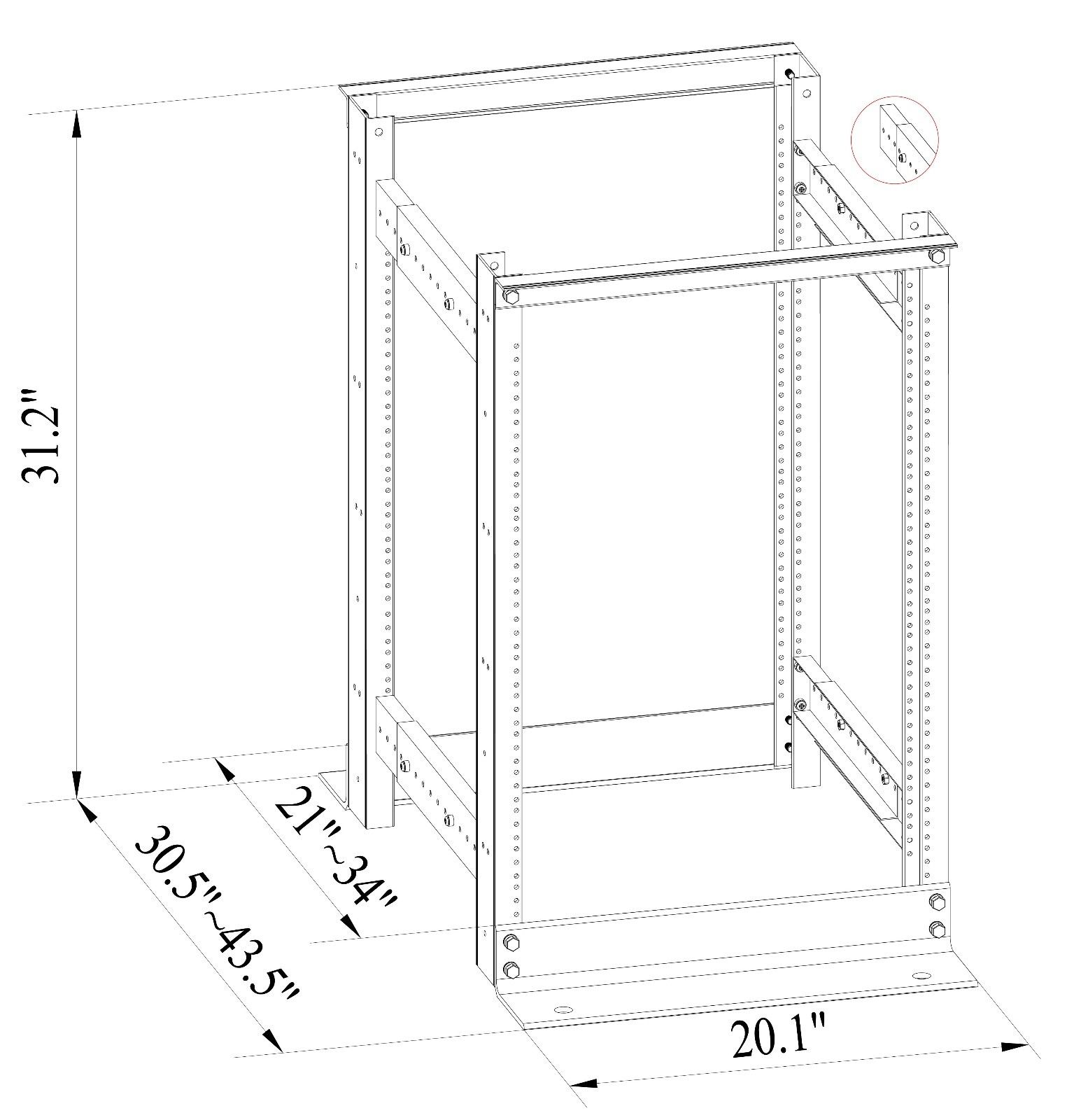Article: “America’s Constitution is terrible. Let’s throw it out and start over.“
Setting aside the American self-flagellation that appears to be going on lately, this is not the first article I have encountered calling the Constitution “terrible” and saying we need to scrap it. And generally what I have discovered about those who call for such is a massive amount of misunderstanding about the Constitution and how it is supposed to work.
Along with holding the perspective the United States is merely a country of provinces like Canada. When in actuality the United States is a federated republic of independent, sovereign States. Not provinces. States. With each State being a republic of its own, with its own sovereignty, with some of that sovereignty ceded to the Federal government by way of the Constitution.
Note the word republic as well. Not democracy. Republic. There’s a major difference, yet many keep using the word “democracy” when referring to the United States.
Last year, Ryan Cooper wrote an article for The Week called “The case against the American Constitution” in which he said the Constitution is “falling apart before our very eyes.” I have not specifically read that article — I glanced it enough to pull that specific phrase — and I will write a specific rebuttal to it later. But I will speculate that there will be very little within that article I have not already seen.
The subject of this rebuttal is Cooper’s set of ideas for replacing the Constitution. Ryan Cooper is not the first I have encountered calling for replacing the Constitution. Earlier I wrote a rebuttal to Dr. Sanford Levinson and his article called “Our Imbecilic Constitution”. So ahead of examining Cooper’s points, I am unsure if Ryan Cooper will be presenting anything original.
Especially since Cooper starts out on fallacious footing:
The major problem with America’s Constitution is that it creates a system in which elections generally do not produce functioning governments, and there is no mechanism to break the deadlock (like calling snap elections). Most of the time, control of the House, Senate, and presidency is split between the two parties in some way. Bipartisan compromises to keep government functioning used to be common, but are near-impossible anymore due to extreme party polarization. So as Michael Kinnucan points out, during divided government “there is de facto no legislative body.”
This is not an issue with the Constitution. The Constitution merely sets the framework for a government. It doesn’t specifically prescribe or proscribe how those within the government are to act. Nor does it prescribe or proscribe who is to comprise that government, with some restrictions on age and residency.
That our political system has devolved itself into two major political factions with several smaller factions continually vying for breadcrumbs — though they had a much better showing in 2016 than years prior — is a problem with the People.
To fix the problem, America should aim to make itself more like a proportional parliamentary democracy, by far the most successful and road-tested form of government.
And this completely ignores the underlying problem. The problem the United States faces is not with the Constitution. It is the Federal government. A proper consideration is shrinking the Federal government and returning much of its ill-gotten power to the States from which it stole that power.
After all, the Tenth Amendment prescribes that all powers not explicitly enumerated to the Federal government belong to the States.
This does not mean there are not ways even the foundational system can be improved. Indeed I have entertained some such ideas in the past. For example, I advocate reforming the Electoral College such that the Nebraska/Maine model is universal.
In light of that, let us now entertain Ryan Cooper’s ideas.
1. Get rid of the Senate filibuster.
Okay, this ought to be good.
This would at least allow a party that got the presidency plus both houses of Congress to govern, and could be passed by a simple majority vote in the Senate. However, that sort of unified control only happens every six to 10 years or so, so this reform would only be periodically useful.
His idea doesn’t follow from the premise. The filibuster has nothing to do with whether the party that got the Washington Trifecta would be able to govern. Indeed, look to everything the Democrats had to do in order to pass the Affordable Care Act, the various compromises they had to make to placate other Democrats while holding a “filibuster-proof majority”.
Beyond that, getting rid of the filibuster doesn’t require scrapping the Constitution. Only changing the Senate rules.
2. Radically change the way House members are elected.
One major engine of political extremism in America is the partisan drawing of district boundaries. The United States has the most entrenched two-party system in the world, partly a result of “first past the post” voting, and partly because the parties have locked themselves into place behind enormous legal barricades to third parties.
Actually the latter has more to do with it than the former. The “first past the post” voting rules have little to do with this. Ballot-access laws enact significant barriers to third parties, such as the Libertarian Party, from actually gaining any significant electoral ground. Though third parties did have a very significant showing in the 2016 election.
At the same time, we’ve seen both the Republicans and Democrats enact rules to prevent insurgencies and ensure that favored candidates are the ones winning primaries.
Worse, the ironclad two-party system has proved to be highly vulnerable to an extreme right-wing fringe that protects itself with gerrymandering and other cheating tactics.
Do not pretend the Republicans are the only ones who gerrymander. And gerrymandering is not what protects “an extreme right-wing fringe”, setting aside for a moment that term not being explicitly defined.
Where in any other country the 15-20 percent of the national population that makes up Republican primary voters would have their own small party, instead they now own one out of two parties.
Do I really need to go into how Democrat primaries work? At least the Republicans do not have the concept of “super-delegates”, which, along with all other corruption that has come to light, worked very well to ensure Bernie Sanders had little more than a prayer in the 2016 Democratic primaries.
As the folks at Fair Vote demonstrate, one clever way to solve this problem would be to change the way House members are elected. Instead of drawing one district for every representative, make each district have three seats, allocated by a ranked-vote system.
Such a system could only effectively work in the larger States. But let’s entertain the idea for a moment by pointing out something most likely don’t realize about the Constitution: there is no requirement for districts. No, seriously. Look if you don’t believe me. See Article I, Section 2 of the Constitution of the United States.
A State is granted a certain number of representatives based on population. That is the only advance requirement, other than age and residency of those actually chosen to serve.
The States were free to decide how their Representatives are chosen. For example in the First Congress, all Representatives from Connecticut, New Hampshire, New Jersey, and Pennsylvania were chosen “at-large”. And many States retained at-large representation into the early 20th century.
Obviously in States with only one Representative — Wyoming and Montana come to mind — this is a moot point. But larger States like Texas, California, and New York could adopt a different model that doesn’t rely heavily on district lines.
In other words, this is something that doesn’t require scrapping the Constitution, or even amending it. This is an idea any State could start considering as soon as next year. Provided Congress let them.
The requirement of one district per Representative is given by statute, specifically 2 USC § 2c. So if a State wanted to try something different, they would need to convince Congress to remove that statute, or challenge it in Court.
And while we’re at it, let’s change House elections from every two years to every four years. American lawmakers need time to actually govern, and should not be perpetually seeking re-election.
I doubt the four year intervals would change that. But if we were to change to a four year interval, it would probably work best to have everyone staggered like with the Senate, with about 1/4th of the House up for election every year. Obviously such would require amending the Constitution.
3. Neuter the Senate.
And now we enter dangerous territory. The Senate was introduced with the Connecticut Compromise as a means of neutering the power of the largest States, thus preventing those large States from exacting control over the smallest States. The Senate, in short, ensures that all States have some kind of say on a matter, even if they’re not in the final majority vote.
As such, enacting this idea:
However, it might be possible to pass an amendment making the Senate a House of Lords-style institution without real power. Senators could still be elected, but not be able to pass a binding vote on legislation.
would be very, very dangerous.
Read the history of the Connecticut Compromise and you will understand why it was so important to the Constitution’s framework.
4. Elect the president from the House.
This was initially proposed in the Virginia Plan, the House and Senate jointly selecting the President.
The point of “separation of powers” was to create a check on tyranny, but it has ironically worked to increase tyranny and undermine democracy.
This is again blaming the framework when the blame lies on the actors who maneuvered things in that direction. When a history professor writes in an article on Presidential term limits, “Democratic lawmakers would worry about provoking the wrath of a president who could be reelected”, clearly something went haywire somewhere down the line.
What we need are the proper people in office who can correct that course.
The separate executive branch is a major factor behind the rise of the lawless imperial presidency in the United States, and most other American-style constitutions fell apart due to standoffs between the president and legislature.
The separate Executive Branch was initially created to have a functioning Federal government during the months Congress was not in session. In the first Congresses, sessions only lasted a few months at most. Much like what we see in most States today.
And we don’t have anywhere near a “lawless imperial presidency” in the United States.
In normal countries, the executive is simply part of the legislature.
And here’s more of that self-flagellation I referred to earlier. I don’t think I need to go any further. Especially since his last point is, literally:
5. Throw the entire Constitution in the garbage.
And where does he start off? Attacking the amendment process. No need to respond to that, as I’ve already done so.














You must be logged in to post a comment.